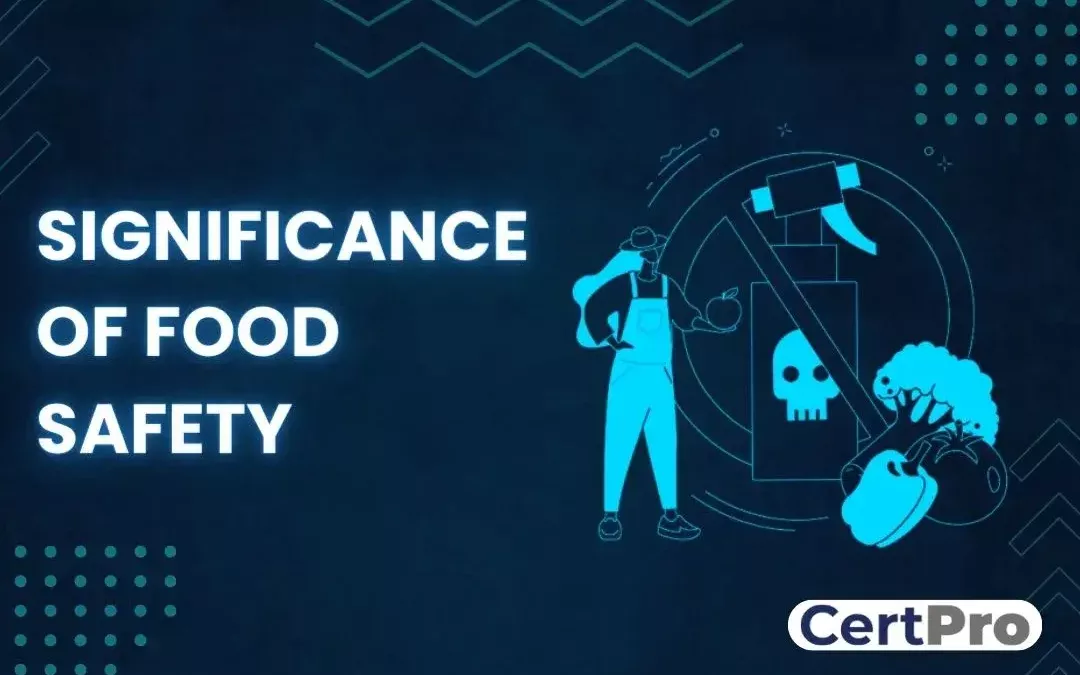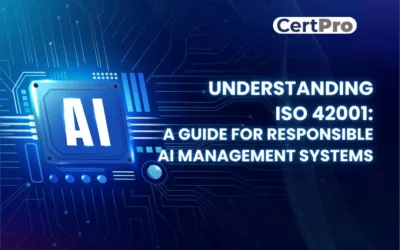Food is vital to human survival since it is a source of vital nutrients that give us the energy and nourishment we need to go about our everyday lives. Food has cultural significance beyond its physiological benefits, as it shapes community identities and influences social norms. Food safety becomes critical in the context of these complex functions.
Customers have a right to safe food in addition to wanting to enjoy what they eat. Food industry executives need to ask themselves, “Why is food safety important?” given the crucial connection between hygienic food practices and the health of patrons and businesses.
This aspect of the food supply chain is committed to protecting consumers from the negative consequences of foodborne illnesses and food poisoning, preserving human life as well as the operations of businesses. Acknowledging the wider implications of food safety promotes robust businesses and a healthier community, thereby reiterating the crucial link between conscientious eating habits and general health.
WHAT IS A FOOD SAFETY MANAGEMENT SYSTEM?
Food safety is a scientific approach to multiple disciplines involving the handling, processing, storing, and distribution of food in various ways that prevent food-borne diseases through contamination and/or infection in the food production chain.
The principles of food safety intend to prevent food from being contaminated or infected. This can be achieved through various means, some of which are given below:
- Cleaning and sanitizing all surfaces, equipment, and utensils.
- Through maintenance of personal hygiene and cleanliness across the chain.
- Maintaining the right temperature, environment, and equipment throughout the processes of storing, chilling, and heating food.
Implementation of effective pest control is a necessary requirement.
WHY FOOD SAFETY MANAGEMENT SYSTEM?
- Safe and nutritious food is the key to sustaining life and promoting good health.
- More than 200 diseases, from diarrhea to cancer, are caused by unsafe food containing harmful bacteria, viruses, parasites, or chemical substances.
- 420000 people die every year, resulting in the loss of 33 million healthy life years (DALYs), and an estimated 600 million (almost 1 in 10 people in the world) fall ill because of contaminated food.
- 125,000 deaths occur every year among children under 5 years of age, and out of this figure, 40% carry food-based diseases.
Food supply chains have gained pace in international markets and are now crossing multiple national borders. Having good collaboration between governments, producers, and consumers helps to ensure food safety.
Steps to create and maintain a food safety culture in an organization:
Step 1: Lead from the top: Management plays a crucial role in setting an example for the rest of the team to follow the food safety norms and effectively practice the same on a daily basis.
Step 2: Reasoning for the purpose: Elaborate and detailed study on the importance of food safety norms that are set specifically for certain processes. This step is taken so that they understand the reasoning behind those policies and procedures and have better adherence to and compliance with the norms.
Step 3: Food Safety Training: Imparting training and education to fellow staff and employees should be an ongoing process. New employees need to be trained on food safety and its importance for the organization.
Step 4: Provide Proper Equipment: The commercial kitchen should have the necessary tools that are required to safely prepare and serve food. For example, make sure that there are food thermometers at every workstation so that employees working in that particular activity can easily and regularly monitor the temperatures of the food that is being prepared.
Step 5: Keep temperature logs: Guide the employees at the workstations to record the temperature of foods at specific intervals and maintain a log of temperature records.
Step 6: Inspection of Incoming Food for Safety: Train and instruct your team to conduct a food inspection once it arrives at the facility before it is used for processing. If food isn’t safe when it arrives at your facility, ensure that your team is good enough to refuse potentially unsafe food items.
Step 7: Stay updated and informed on food safety awareness: Recently, contaminated papayas from Mexico sickened hundreds of people. Stay current on news stories about food-borne illness outbreaks to ensure that you’re not buying or using potentially unsafe foods.
Step 8: Regular self-audits: In order to enforce effective food safety in the day-to-day activities of an organization, periodic self-inspections should be part of your planned activities and be integrated with the ongoing practices of the system.
Step 9: Choose third-party food safety consultants: Get third-party food safety consultants to review your facilities and talk to the staff about their day-to-day activities while also providing necessary training related to food safety and making sure that the system is in line with the requirements of the protocols that need to be followed in an organization.
WHAT ARE SOME OF THE FOOD SAFETY METHODOLOGIES IN PRACTICE?
ISO 22000: ISO 22000:2018 outlines the requirements of a food safety system and the processes that need to be in place for an organization to get certified. It details the need for an organization to establish and demonstrate its ability to monitor and regulate food safety hazards in order to make sure that the food is safe. Regardless of its size or position in the food chain, any organization can implement FSMS.
FSSC 22000: The FSSC 22000 Food Safety System is a certifiable standard methodology that is based on ISO 22000 and other ISO standards, in addition to sector-specific PRPs that provide a structure or framework for effectively monitoring and managing the organization’s food safety requirements. The Global Food Safety Initiative (GFSI) fully recognizes FSSC 22000. The FSSC 22000 Scheme consists of three components: ISO 22000, sector-specific PRPs, and additional requirements.
HACCP: Hazard Analysis Critical Control Points (HACCP) is an internationally recognized methodology used for identifying and monitoring food safety-related risks associated with processing facilities. HACCP is a systematic approach in which food safety measures are addressed through identification, analysis, and control of biological, chemical, and physical hazards right from the stage of raw material arrival, procurement, and handling to manufacturing, processing, distribution, and consumption of the finished food product.
Global GAP: Global GAP is an internationally recognized system that outlines a set of farm standards that farm producers must adhere to in order to meet the requirements of Global GAP (Good Agricultural Practices) standards.
Some of the practical benefits of food safety standards
- The Global GAP Standard includes multiple initiatives like food safety, environment, animal welfare, and workers’ safety and welfare factors. It emphasizes the integrated and sustainable production of feed, hatchery, harvest, and post-harvest activities, as well as other activities involved in the supply chain.
- The preventive approach of a food safety standard-based practice not only improves food safety management but also complements the other quality aspects.
- Food safety system norms help us protect the system from risks and provide the company with effective management of food safety hazards by creating an environment capable of producing a safe food product and a management system to continually manage, monitor, validate, and improve the system.
WHO IS INCHARGE OF ENFORCING THE STANDARD FOR FOOD SAFETY?
Various organizations, including local governments, the Food Standards Agency (FSA), food outlets, and consumers, actively support the implementation of food safety regulations. The FSA is responsible for monitoring and enforcing food safety legislation in cooperation with local authorities. Local government agencies are essential in carrying out audits and inspections to make sure that set criteria are followed. Food enterprises must ensure that their employees are educated in order to comply with these safety regulations. Concurrently, customers participate by raising issues and making knowledgeable decisions about the food they eat. The implementation of a cooperative strategy involving various stakeholders highlights the all-encompassing endeavor to preserve and improve food safety across the whole supply chain.
FAQ
Why is food safety crucial?
Food safety is essential for protecting consumers from foodborne illnesses and ensuring the health of both individuals and businesses.
How often is a surveillance audit conducted?
Surveillance audits are typically conducted annually or semi-annually to verify an organization’s ongoing adherence to food safety standards.
What is the purpose of the recertification audit?
The recertification audit, occurring every three years, reassesses an organization’s compliance with food safety standards to maintain certification.
Why is a Food Safety Management System necessary?
A safe and nutritious food supply is crucial for sustaining life and promoting good health. Unsafe food can lead to various diseases, impacting millions of lives annually.
How can organizations create a food safety culture?
Creating a food safety culture involves leadership commitment, comprehensive training, providing proper equipment, temperature monitoring, inspections, staying informed, regular self-audits, and seeking third-party consultation.
HOW DOES THE NIST CYBERSECURITY FRAMEWORK FUNCTION, AND WHY IS IT IMPORTANT?
Emerging cyber threats make cybersecurity an essential consideration for organizations handling and managing data. In this regard, the NIST cybersecurity framework applies to improving your cybersecurity program. It is a set of guidelines that helps improve your...
UNDERSTANDING ISO 42001: A GUIDE FOR RESPONSIBLE AI MANAGEMENT SYSTEMS
The invention of artificial intelligence (AI) has changed the operational processes of many industries. However, the rapid growth of technology increases ethical, security, and privacy-related concerns. Therefore, the International Organization for Standardization...
EUROPEAN UNION’S ARTIFICIAL INTELLIGENCE ACT: HOW THIS GROUNDBREAKING LAW AFFECTS YOUR BUSINESS
Nowadays, Artificial Intelligence (AI) is transforming our lives exceptionally well. AI is now streamlining healthcare services, providing virtual assistance, and fulfilling queries. Technologies have boons and curses. Similarly, AI creates many concerns about...




